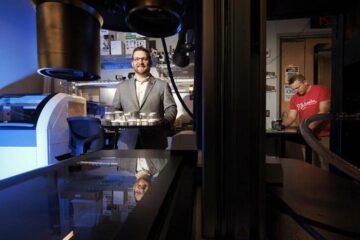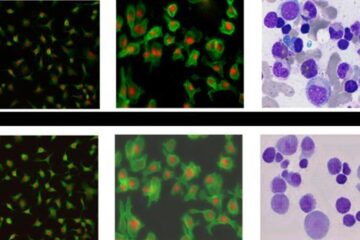Order of species loss has important biodiversity consequences

In a study that mimicked the natural order of species loss in a grassland ecosystem, researchers found that declining biodiversity greatly reduced resistance to invasive species and that the presence of even small numbers of rare species had profound functional effects.
The results have important implications for understanding the biodiversity crisis, said researcher Erika S. Zavaleta, assistant professor of environmental studies at the University of California, Santa Cruz. Previous experiments relied on random species removal rather than realistic patterns of loss, which turn out to be quite dissimilar.”We replicated natural patterns and processes and found that both patterns of abundance and the order of species loss matter a great deal,” said Zavaleta, who conducted the five-year study with Kristin B. Hulvey, a doctoral student in environmental studies at UCSC. “This defines a new direction for research.”
In the realistic loss scenario, entire groups of plants with unique functions disappeared faster than expected by chance, and invader resistance declined dramatically. The results suggest that biodiversity losses in natural systems can have far greater impacts than indicated by randomized-loss experiments.
The five-year study is among the first to combine conservation biology’s focus on the order of species loss with experimental scrutiny of the consequences of those losses. It was conducted at the Jasper Ridge Biological Preserve at Stanford University.
After four years of observation to understand natural patterns of species loss, 70 research plots were planted with common annual grasses, rare summer-flowering forbs, and rare native bunch grasses. Plots reflected six levels of species diversity. Half of the plots were then invaded with Centaurea soltitialis L. (yellow starthistle), one of the most ecologically and economically damaging weeds in California. “Then we watched how able the starthistle was to invade the various communities,” said Zavaleta. “Starthistle was much less able to invade the more diverse communities.”
In fact, from the most diverse to the least diverse plots, starthistle biomass increased by more than 100 percent. Even in plots where the total biomass of five rare species made up as little as 3 percent of the grassland, the extra diversity thwarted invaders, said Zavaleta. “Plots with 15 species had 75 percent more starthistle than plots with 20 species,” she said.
Each species, no matter how few in number, potentially provides different services within the ecosystem, explained Zavaleta. “Those extra species in our study are functionally unique. They are alive at different times of the year, and their roots are at different depths,” she said. “It turns out that very rare things can matter a lot.”
Other research has shown that more diverse communities use resources more efficiently, from water and nutrients to light, said Zavaleta. “By monopolizing resources, they’re keeping invaders away,” she added. “With fewer species, there are holes in the system and invaders can come in. Just a couple of members of certain species can help plug those holes. There may be only a few sprinkled around, but they can still be exerting a big effect on the way the system works.
Zavaleta likens the ecosystem benefits of retaining rare species to the role of a child plugging a dike with his thumb. “It’s a small difference that can have huge consequences,” she said. “Most ecologists would like to see natural systems able to do that–resist accidental invasion.”
Underscoring the importance of the experiment’s design, Zavaleta and Hulvey note that their findings differ from the results of studies at the same site that tested the effects of randomized changes in species richness on starthistle. That work found little difference in invader success depending on the number of species in each plot.
“The incorporation of realistic species loss order into our experimental design profoundly altered the observed relation between diversity and invasibility,” they write.
Media Contact
More Information:
http://www.ucsc.eduAll latest news from the category: Ecology, The Environment and Conservation
This complex theme deals primarily with interactions between organisms and the environmental factors that impact them, but to a greater extent between individual inanimate environmental factors.
innovations-report offers informative reports and articles on topics such as climate protection, landscape conservation, ecological systems, wildlife and nature parks and ecosystem efficiency and balance.
Newest articles

Bringing bio-inspired robots to life
Nebraska researcher Eric Markvicka gets NSF CAREER Award to pursue manufacture of novel materials for soft robotics and stretchable electronics. Engineers are increasingly eager to develop robots that mimic the…

Bella moths use poison to attract mates
Scientists are closer to finding out how. Pyrrolizidine alkaloids are as bitter and toxic as they are hard to pronounce. They’re produced by several different types of plants and are…

AI tool creates ‘synthetic’ images of cells
…for enhanced microscopy analysis. Observing individual cells through microscopes can reveal a range of important cell biological phenomena that frequently play a role in human diseases, but the process of…





















